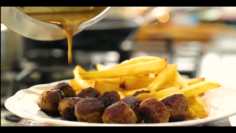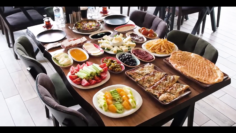Sarma (Stuffed Leaves)
Today, the roots of sarma, which has touched every civilization, entered every kitchen, and graced every table, trace back to the Turkic communities of Central Asia.
An etymologically Turkish word, Sarma is a special delicacy that we can encounter in the Balkans, Caucasus and the Middle East in the modern era.
This dish, also known as rolled or stuffed leaves, is made by wrapping a filling, typically bulgur or rice along with various other ingredients, inside plant leaves such as vine leaves, white cabbage, black cabbage, mulberry leaves, or cherry leaves.
Vine leaves are often the preferred choice, as they offer the longest shelf life and the best taste harmony for making stuffings.
The Turks prepared leaf wraps so that the rice could be stored and eaten easily in one single bite.
The filling mixture in Sarma includes rice, spices, various herbs, and preferably minced meat. Since each region uses different ingredients, there are various types of Sarma specific to different areas. The versions cooked with olive in the Aegean region, Batırık of Tokat, and the meat-filled Sarma varieties from Central and Eastern Anatolia are just a few examples.
The meeting of the Turks with the Mediterranean played a major role in the transformation of this flavor into a universal culinary product. The Mediterranean, the last stop in the Turks’ journey to Anatolia, not only provided a new homeland but also served as a gateway for Turkish flavors to reach the world.
In Turkish culture, Sarma, a dish served to guests as a sign of sincerity, is one of the most important symbols of hospitality and generosity. Tables are enriched with Sarma and it is the most popular flavor of special days.













